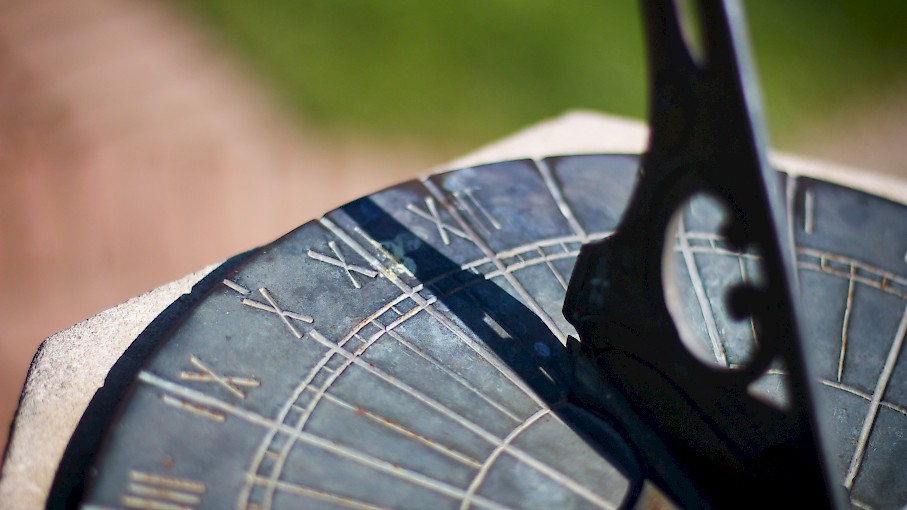Pencil Sundial

Did you know that the Sun moves across the sky at the same speed every day? In this experiment we use this fact to make a sun-powered clock with no moving parts!
Experiment
- Find a sunny place to set up your sundial - somewhere that will get sunlight to it all day, and start early in the day if possible.
- Place a big glob of plasticine on the ground and stick a pencil in it so it stands firmly and vertically.
- Every hour on the hour (maybe set an alarm to help), go back to your sundial and place a stone where the tip of the pencil's shadow touches the ground. You can write the number of the hour on your stone or marker if you wish.
- That's it - you've made a sundial! Now on following days you can simply look at the pencil's shadow and tell the time by which stone it's pointing at or between!
So what's happening?
Every day the Sun rises in the East and sets in the West due to the spin of our planet, the Earth. Because Earth always spins at the same speed it makes it appear that the Sun travels across the sky at the same speed, and is always at its highest point in the sky at midday.
This regular motion means that the shadows created by the Sun always point in the same direction at the same time every day* so we can use this to tell the time!
*Due to the Earth having a little bit of angular tilt they do vary a little with the seasons. Did you know that the Earth's tilt also causes the seasons in the first place?
What if?
What would happen if you:
- Made your sundial on a big piece of card, and turned the card by a few degrees the next day?
- Used yourself in place of the pencil, standing in the same place each time, and made a huge sundial with rocks?
- Swapped the pencil for a longer or shorter stick, does the sundial still work the same?
